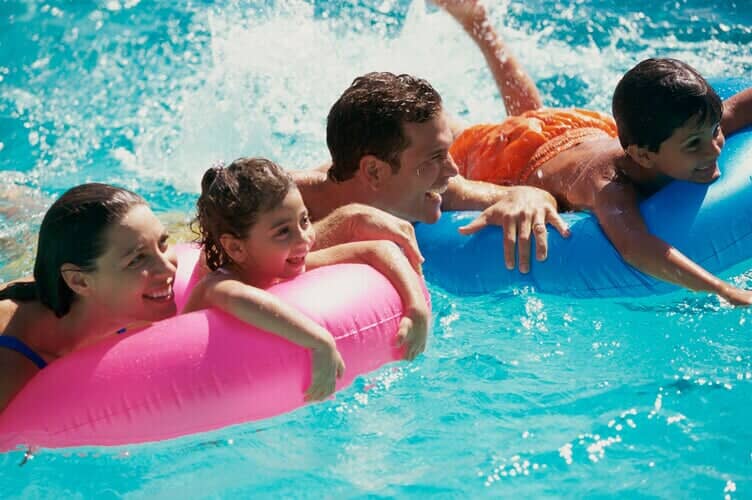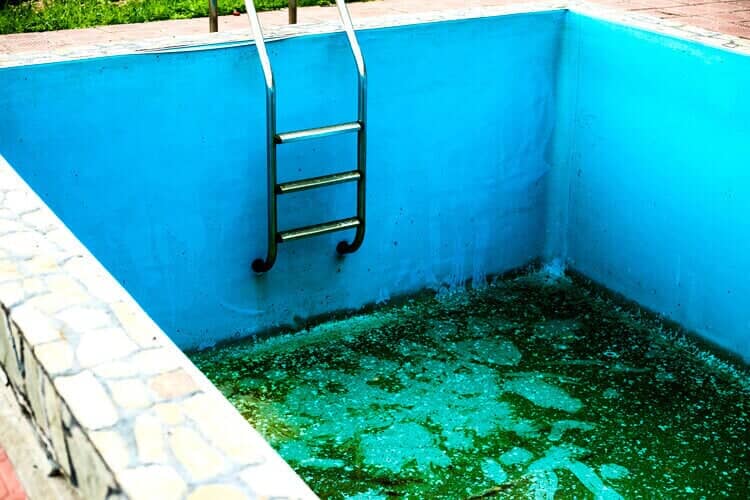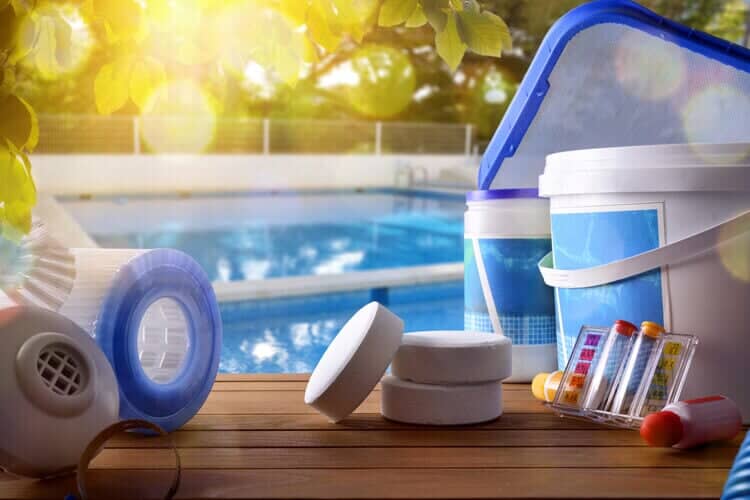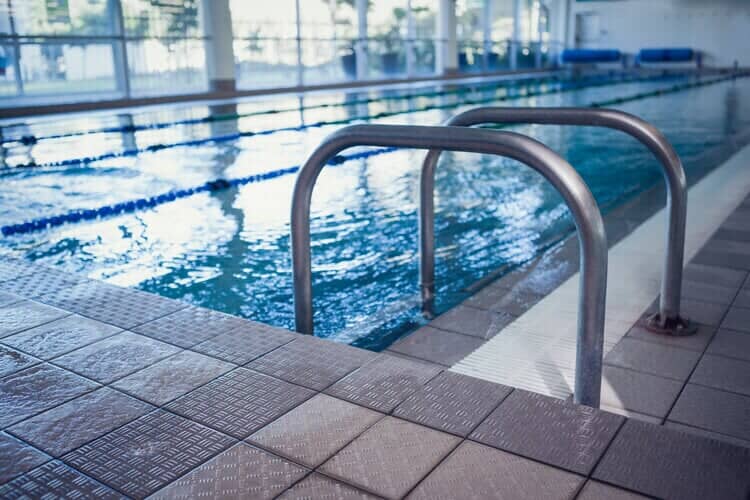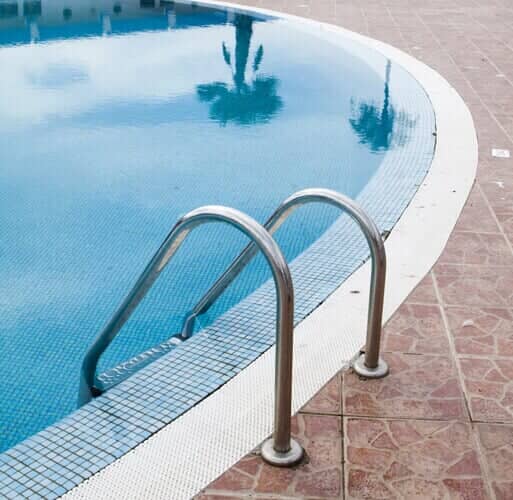POOL AND SPA TIPS IN MECHANICSBURG, PA
Here are some Helpful tips for pool owners. Please click on the links below to learn more about each concern:
POOL OPENING SUGGESTIONS:
Cover Removal
- Have your pool cover free of water and debris. The most important thing you can do in order to facilitate the opening process is to have your pool cover as free of water and debris as possible. Although we are equipped to remove large or small amounts of water and debris from covers, the time to open a pool is significantly reduced if the cover surface is clean and dry.
- Do not mistakenly pump water from the pool. If you decide to remove water from the pool cover, be careful that you do not mistakenly pump water from the pool itself. It has been our experience that light weight poly covers can allow a minimal exchange of water between the pool cover surface and the pool itself. Also, a minor hole in the cover can allow a much greater exchange of water. When pumping water from the cover, we strongly recommend that the water level on top of the cover be monitored closely to avoid pumping a large amount of water from underneath the cover. Resecuring the cover to make it more taut when the water on top of the cover is reduced can help eliminate erroneous removal of pool water.
- A Helpful Hint: If the area that you are pumping the water to is lower than the level of the pool cover, you can start a siphon by running the pump for a few minutes until water starts flowing and then turning the pump off. Once the siphon is started, water will continue to flow even though the pump is not running. As above, we recommend that you monitor the water level on top of the cover to avoid removing water from the pool.
Proper Operating Water Level
- A day or two before we come to open the pool (if the cover is clean and dry), it is helpful to have the pool up to the proper operating level - about half way up the skimmer(s). Having the water up to normal operating level allows us to start the filter system completely and have all lines open and functional upon departure. This eliminates call backs to open skimmer lines and saves both you and Aqua Specialists, Inc. valuable time.
- If you have a liner pool with a mesh cover and your pool normally has algae in the spring, it is not necessary to remove any water from the pool. Our service men will vacuum the pool to waste to remove the algae and lower the water level.
Water/Electricity
- It is essential that our service men have access to water and electricity once on the job site. Water is necessary for cleaning the deck, priming the pump, and possibly filling the pool to the proper level. Electricity is necessary for running portable pumps and possibly small power tools.
Equipment/Chemicals
- Having all of your equipment (ladders, handrails, automatic pool cleaners, backwash hose, plugs, etc.) accessible and in a centralized location helps our service men locate specific items more easily. If you have chemicals or filter media (D.E.) that you would like us to use, please have them accessible and centralized as with the equipment above.
Special Requests / Repair Needs
- If you have any special minor repair needs that you want us to perform with your opening, please notify us well in advance so that we can be properly prepared.
- If you are going to leave a note for our service men, please make sure that it is highly visible.
LEAKS:
Winter Water Loss It is common for swimming pool water levels to be slightly lower in the spring than they were at the time of closing. Although it is possible that there is a leak present, there are other scenarios that should be explored first:
- Water can be lost due to displacement caused by an extraordinary amount of weight on top of the winter cover (excess water and/or debris). This would be water that was forced up and over the pool walls.
- If the winter cover has any holes or tears and a cover pump was used to remove water from the cover, some pool water may also have been removed, lowering the water level.
- In any case, if a leak is suspected, we recommend opening and operating the pool normally for a few days and monitoring the water level. This way, if a leak is present, water loss can be confirmed and quantified.
Procedures to Facilitate Leak Detection Being prepared to
answer the following questions can save a service company time
and save you money when attempting to locate a leak.
- What type of pool do you have? (Vinyl liner, Concrete, Plaster, Fiberglass, etc.)
- How much water is the pool losing per day? (1/4 inch, inch, 3/4 inch, 1 inch, etc.)
- Is there any visible water around the filter system?
- Does the pool lose more water with the pump on or off?
- Monitor the pool's water level for 12 hours with the pump on and then 12 hours with the pump off.
- If the pool loses more water with the pump on, the leak is most likely in a pressure line (return line, pool cleaner line, or jet line).
- If the pool loses more water with the pump off, the leak is most likely in a suction line (skimmer line, vacuum line, or bottom drain line).
- If the pool loses the same amount with the pump on or off, the leak is most likely in the pool shell or liner.
- Was the pool covered with a solar blanket during period of water loss?
SIMPLE SOLUTIONS FOR COMMON POOL PROBLEMS:
Air bubbles visible in strainer basket
- Make sure pool water is at proper operating level (mid-skimmer).
- Check to make sure skimmer weir(s) is/are not stuck.
- Make sure pump strainer lid and gasket are sealed properly.
- Clean all debris from strainer basket.
Low Flow
- Check and clean skimmer baskets (poolside).
- Check filter pressure - if 8 p.s.i. above normal - backwash filter.
- Check pump strainer basket and clean as necessary.
- Check pump impeller and remove any debris.
- Re-prime pump - fill pump basket with water before re-starting.
No Suction For Vacuum
- Make sure vacuum hose is primed (full of water).
- Make sure filter is clean (backwash if necessary).
- Make sure all baskets are clean.
- Isolate vacuum line if necessary (close other appropriate suction line valves).
- For millivolt heaters - make sure pilot is lit.
- Clean all baskets.
- Check filter pressure. If filter is dirty (high filter pressure) backwash filter to increase flow. The heater's pressure switch will not allow the heater to fire if it does not sense enough flow. Backwashing the filter usually corrects this problem.
WATER BALANCE:
Keeping your water chemistry balanced is imperative to keeping a swimming pool clean, clear, and in good working order. The swimming pool's structure and filter system can be adversely affected if the water is not kept in balance. The following are the levels that we recommend for proper pool water balance:
| Free Available Chlorine | 2 - 3 p.p.m. |
| Combined Chlorine | 0 p.p.m. |
| Bromine | 3 - 5 p.p.m. |
| pH | 7.4 |
| Total Alkalinity | 80 - 120 p.p.m. |
| Calcium Hardness | 250 p.p.m. |
| Cyanuric Acid | 30 - 50 p.p.m. |
| Total Dissolved Solids | <1500 p.p.m. |
| Iron | <0.2 p.p.m. |
| Copper | <0.2 p.p.m. |
Strong Odor/Eye Irritation:
A common misconception among swimming pool owners and swimmers is that strong chlorine odor and eye irritation is due to high chlorine levels in the pool water. In actuality, the reverse is true. Strong chlorine odor and eye irritation are most commonly the result of a high level of combined chlorine present in the pool water. Combined chlorine is most commonly found in the form of chloramines (chlorine combined with ammonia from perspiration or other sources). This type of chlorine is not effective as a sanitizer and produces a strong chlorine odor, as well as irritating swimmer's eyes. Shocking the pool with a quick-release non-stabilized chlorine is recommended to eliminate chloramines. Thus; adding more Free Chlorine will solve the problem, not amplify it as is commonly misconstrued among pool users and owners.
High Cyanuric Acid (Stabilizer) Level: If you use 3-inch stabilized chlorine tablets (tri-chlor tablets) or stabilized granular chlorine (dichlor granular), you will be adding stabilizer to the pool every time that you add chlorine. The stabilizer (cyanuric acid) level limits the effectiveness of your chlorinewhen it reaches a level of 100 p.p.m. or more. This level should be checked at least once a month if you use either of the chlorine types listed above. If shocking (boosting the chlorine level quickly) is necessary, we recommend using a non-stabilized chlorine such as calcium hypochlorite.
Low pH Due To 3" Tablet Usage: If you use 3-inch stabilized tablets to chlorinate your pool, you should monitor your pH closely. 3-inch tablets have a pH of 2.4 and lower the pH of your pool water consistently over time. If ignored, the pH of your pool water can decrease drastically and lead to structural and equipment damage. We recommend testing your pH at least three times a week.
High Cyanuric Acid (Stabilizer) Level: If you use 3-inch stabilized chlorine tablets (tri-chlor tablets) or stabilized granular chlorine (dichlor granular), you will be adding stabilizer to the pool every time that you add chlorine. The stabilizer (cyanuric acid) level limits the effectiveness of your chlorinewhen it reaches a level of 100 p.p.m. or more. This level should be checked at least once a month if you use either of the chlorine types listed above. If shocking (boosting the chlorine level quickly) is necessary, we recommend using a non-stabilized chlorine such as calcium hypochlorite.
Low pH Due To 3" Tablet Usage: If you use 3-inch stabilized tablets to chlorinate your pool, you should monitor your pH closely. 3-inch tablets have a pH of 2.4 and lower the pH of your pool water consistently over time. If ignored, the pH of your pool water can decrease drastically and lead to structural and equipment damage. We recommend testing your pH at least three times a week.
FILTER SYSTEM OPERATION:
Many pool owners utilize a timer to run the filter system at various times throughout the day. Although running the filter system 24 hours a day is most beneficial for maintaining clean and clear water, running the system at least 12 hours a day will also work. However, if the system is only run for 12 hours, we recommend that it be run during the daylight hours. The 12 hours of operation should be continuous, as starting and stopping the pump motor frequently can have an adverse affect on the motor - necessitating untimely repairs.

